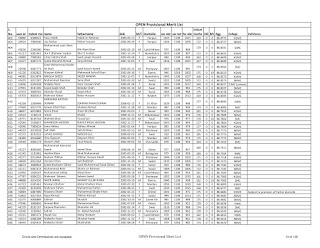Chap.19 Behavior MCQs
|
1. |
|
|
|
2. |
The
cyclic phenomenon which recurs eachb day, each lunar month, each day is: (a)
Rhythms (b) Biological
Rhythms (c)
Circadian Rhythms (d) All of them |
B |
|
3. |
The
repeated sequence of events, which occurs at about 24 hours interval: (a)
Biological Rhythms (b)
Circadian Rhythms (c)
Botha and b (d)
None of them |
B |
|
4. |
The
animals which are active in the twilight hours: (a)
Diurnal (b) Nocturnal (o)
Corpuscular (d)
Both b and c |
|
|
5. |
An
innate mechanism in living organisms that controls the periodicity of many
physiological functions: (a)
Body Clock (b)
Wall Clock (c)
Biological Clock (d) None of them |
|
|
6. |
Heritable,
intrinsic, stereotypic, inflexible and consummate, the behavior will be: (a)
Instinctive (b) Innate (c)
Shapping (d) Botha and b |
D |
|
7. |
Catalogue
of behavior or actions exhibited by animal used in ethology: (a)
Picogram (b) Microgram (c)
Milligram (d) Ethogram |
D |
|
8. |
The
most basic unit of innate behavior is (a)
Action (b) Response (c)
Arc (d) Reflex |
D |
|
9. |
Orthokinesis
and klinokinesis are concerned with:. (a)
Learning (b) Orientation
Behavior (c)
Tropic Movement (d) Habituation |
B |
|
10. |
Non
heritable, Extrinsic, Permutable, adaptable and progressive the behavior will
be: (a)
Learning (b) Innate (c)
Oriental (d) Imprinting |
A |
|
11. |
Innate
behaviour is all but: (a)
Heritable (b) Intrinsic (c)
Stereotypic (d) Flexible |
D |
|
12. |
Trial
and error learning has no role in: (a)
Operant Learning (b) Classical
Conditioning (c)
Insight (d)
Imprinting |
C |
|
13. |
Which
is non-directed orientation? (a)
Taxis (b) Kinesis (c)
Tropism (d) Imprinting |
B |
|
14. |
Innate
behaviour is all except: (a)
Coded in DNA (b)
Modified in individual's life span (c)
Modified with species evolution (d)
Programmed responses to external stimuli |
B |
|
15. |
Advantage
of pecking orders is to: (a)
Avoid injury to the stronger animals (b)
Protect territory (e)
Find suitable mate (d)
Assign specific role to individual subordinates |
A |
|
16. |
Imprinting
was studied by: (a)
Timbergen (b) Skinner (c)
Lorenz (d) Pavlov |
C |
|
17. |
A
sophisticated process in which the responses of the organism are modified as
a result of experience is called: (a)
Habituation (b) Imprinting (c)
Conditioning (d) Learning |
D |
|
18. |
This
behaviour reduces an individual's. reproductive fitness while increasing thefitness
of the family (a)
Altruism (b) agonistic
behaviour (c)
Territoriality (d) Cooperation |
A |
|
19. |
……is
the learning that occurs during a sensitive or critical period in early life
and is irreversible for the length of the period. (a)
Habituation (b)
Operant Conditioning (c)
Trial and Error Learning (d)
Imprinting |
C |
|
20. |
The
study of animal behaviour is called: (a)
Ethnology (b) Ethology (c)
Gerontology (d)
Entomology |
B |
|
21. |
"Mary
had a little lamb, its fleece was white as snow. And everywhere that Mary
went, the lamb was sure to go". The behaviour of the lamb is best
described as (a)
Habituation (b) Imprinting ©
Insight Learning (d) Classical
Conditioning |
A |
|
22. |
Animals
that help other animals are expected to be (a)
Stronger than other animals (b)
Male (c)
Female (d)
Related to the animals they help |
D |
|
23. |
An
animal that sacrifices itself for its relatives is exhibiting: (a)
Operant conditioning (b) Kin
selection (c)
Imprinting (d)
Habituation |
B |
|
24. |
Humans
ignoring night sounds while asleep: (a)
Classical Conditioning (b)
Habituation (c)
Operant Conditioning (d)
Imprinting |
B |
|
25. |
Response
of an organism to stimuli is called: (a)
Reaction (b)
Behaviour (c)
Feedback Mechanism (d) None of
these |
B |
|
26. |
Principles
of natural selection are applicable to behaviour as well as physical
characteristics .This was persuaded by: (a)
Darwin (b) Morgan (c)
De Vries. (d) Galton |
D |
|
27. |
Any
regularly occurring sequence of events in an organism is called: (a)
Behaviour (b) Evolution (c)
Biological Rhythm (d) None of these |
C |
|
28. |
Circadian
rhythms appear to be repeated sequences
of events, which occur at ab0ut (a)
One Month Interval (b) One
Year Interval (c)
24 Hours Interval (d) One Season
Interval |
C |
|
29. |
In
the liver of rabbit and mouse, deposition and utilization of glycogen is: (a)
Nocturnal (b) Corpuscular (c)
Diurnal (d) Monthly |
|
|
30. |
Activities
are adapted to the regularly recurring changes in the external conditions by
means of: (a)
Central Nervous System (b) Biological
Rhythms (c)
Biological Clock (d)
Behavioural Modification |
C |
|
31. |
In
an experiment, four feeding tables were set up 50 meters to the north west,
north east, south west and south east. The bees were released in the morning.
Majority of them New to the feeding table to the: (a)
North West (b)
North East (c)
South West (d)
South East |
A |
|
32. |
All
of the following are the characteristics of innate behaviour except (a)
Innate responses are built in nervous system during development (b)
Innate behaviour has survival value for the species (c)
This behaviour is automatic and machine like (d)
Innate responses are forgotten |
D |
|
33. |
Individuals
inherit a suit of behaviors often called: (a)
Electrocardiogram (b)
Ethogram (c)
Traits (d)
Inheritance |
B |
|
34. |
One
of the following is in example of a complex unlearned behaviour: (a)
Web formation by spider (b)
Migration of birds. (Human
sucking reflex (d)
Flight of honey bees towards flowers |
D |
|
35. |
Patellar reflex is also called (a)
Muscle Contraction (b)
Imprinting ()
Knee Jerk (d)
Habituation |
C |
|
36. |
Some
animals show a decrease in activity and metabolism during winter (a)
Aestivation (b) Hibernation (c)
Anhydrobiosis (d) Dispersal |
B |
|
37. |
Change
in the speed of movement is called: (a)
Orthokinesis (b)
Klinokinesis (c)
Geotropism (d) Taxis |
A |
|
38. |
Coordinated
movement that occurs in response to an external stimulus is called: (a)
Learning (b) Reflex (c)
Orientation (d) None of
these |
C |
|
39. |
Pavlov worked on: (a)
Classical Conditioning (b)
Instrumental Learning (c)
Imprinting (d)
Insight Learning |
A |
|
40. |
Cockroaches
learn to run through a simple maze to find food. This is an example of: (a)
Habituation (b) Insight
Learning (c)
Imprinting (d)
Instrumental learning |
A |
|
41. |
A
type of learning that uses reason,especially to form conclusions, inferences
or judgments to solve a problem is called: (a)
Operant conditioning (b)
Classical conditioning (c)
Insight learning (d)
Habituation |
A |
|
42. |
A
cow touches an electric fence and gets a shock. Thereafter it avoids the
fence. This is an example of: (a)
Classical conditioning (b)
Instrumental conditioning (-ve enforcement) (c)
Instrumental conditioning (+ve enforcement) (d)
Innate behavior |
B |
|
43. |
Insight
learning was studied by (a)
Skinner (b) Konrad
Lorenz (c)
Kohler (d) Thorndike. |
C |
|
44. |
Relatively
asocial animals include: (a)
Ants (b)
Termites (c)
Mosquitoes (d) Bees |
C |
|
45. |
Troops
of spider monkeys traveling together and feeding throughout the day within a
core area of their territory is an example of: (a)
Aggression (b)
Dominance Hierarchies (c)
Territorial Behaviour (d)
Agonistic Behaviour. |
D |








Comments
Post a Comment